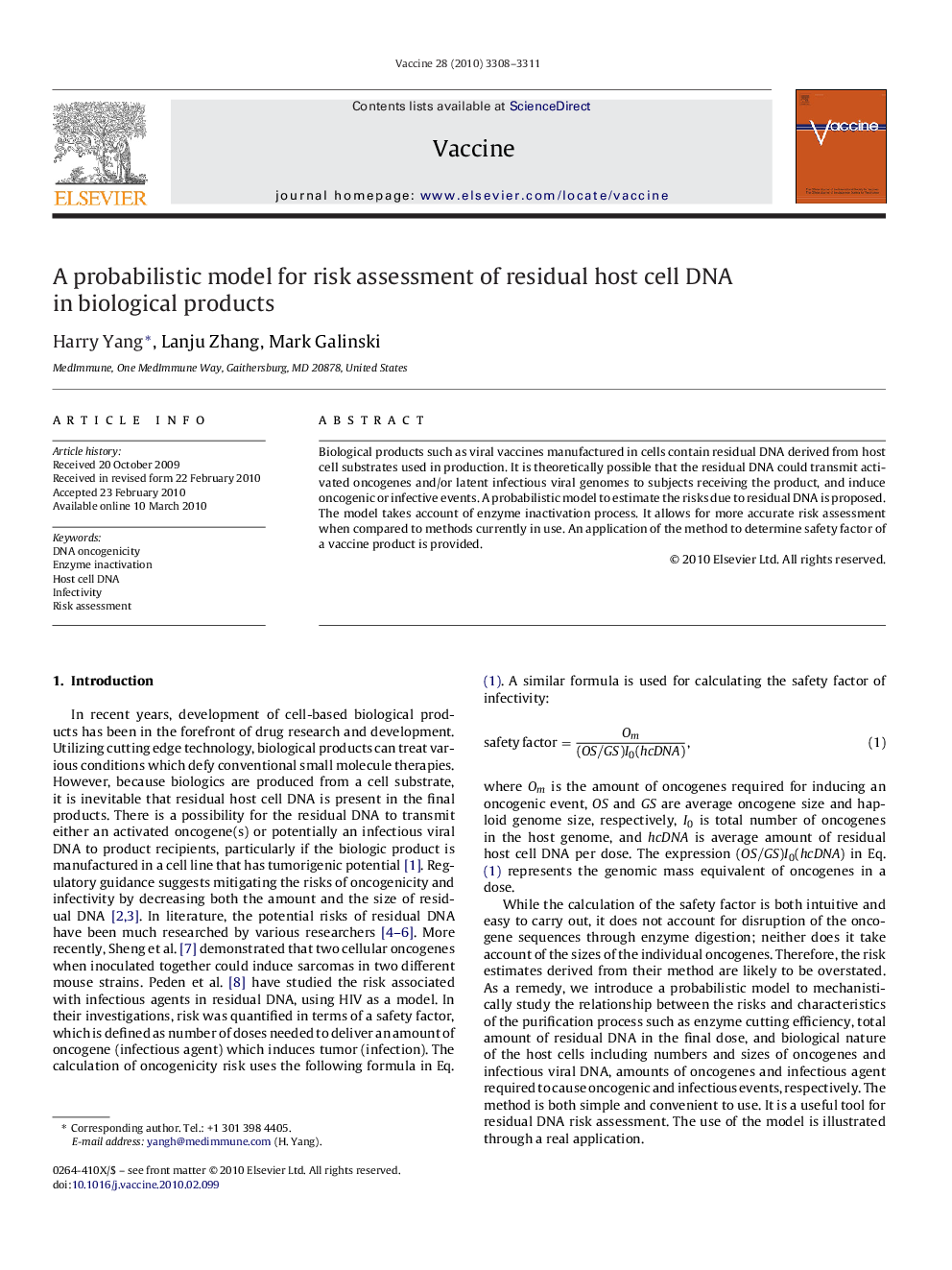| Article ID | Journal | Published Year | Pages | File Type |
|---|---|---|---|---|
| 2405961 | Vaccine | 2010 | 4 Pages |
Abstract
Biological products such as viral vaccines manufactured in cells contain residual DNA derived from host cell substrates used in production. It is theoretically possible that the residual DNA could transmit activated oncogenes and/or latent infectious viral genomes to subjects receiving the product, and induce oncogenic or infective events. A probabilistic model to estimate the risks due to residual DNA is proposed. The model takes account of enzyme inactivation process. It allows for more accurate risk assessment when compared to methods currently in use. An application of the method to determine safety factor of a vaccine product is provided.
Related Topics
Life Sciences
Immunology and Microbiology
Immunology
Authors
Harry Yang, Lanju Zhang, Mark Galinski,
